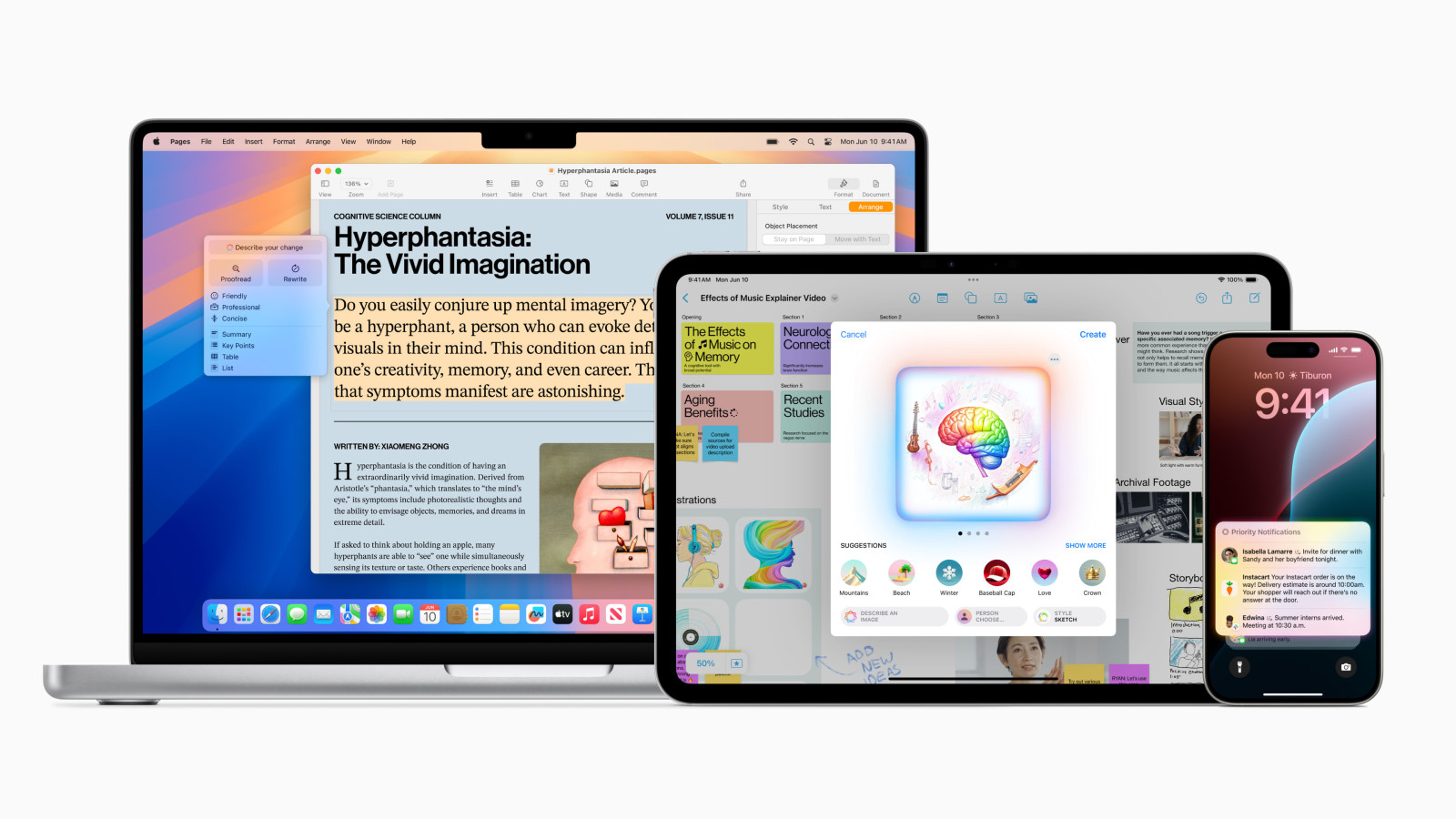
Amid the flurry of recent generative AI announcements, Apple had been strangely quiet. This changed on Monday (June 11, 2024) when it announced Apple Intelligence at its WWDC24 developer conference. In short, Apple Intelligence is a suite of consumer-focused tools embedded into Apple products to enhance productivity and enable creativity. The announcements included:
· Writing tools that can proofread, change the tone, or summarise long text into bullet points
· A text-to-image generator, including a separate ‘image wand’ that turns a sketch into a refined picture and AI-generated emoji (Genmoji)
· A tool that edits videos based on text inputs and descriptions
· Improvements to its virtual assistant Siri so it can carry out multiple tasks across apps
· And a partnership with OpenAI’s ChatGPT that will integrate the AI model into Siri and Apple’s writing tools
Many of these Apple Intelligence tools are iterations of AI apps that already exist:
· For AI writing support there is Grammarly
· For AI text-to-image generation, there is Midjourney
· And there are a whole host of AI-backed video editing and creation tools that may be better than what Apple has to offer
Yet, none of this really matters if the AI use case is generic enough for Apple to emulate. Afterall, what was impressive about Apple Intelligence was not necessarily each new AI tool in isolation, but the offer of all of them – for free – in one place. While tough for those AI start-ups offering third-party tools, it once again shows how owning an ecosystem – in Apple’s case hardware and software – is a powerful defence against potential AI disruption. As MIDiA recently highlighted, OpenAI’s Sora was only a threat to YouTube until Google created its own text-to-video product. Now it has thrown the question back to OpenAI, whose Sora can create videos quickly but must rely on third parties for distribution. Of course, this could also be seen as a proxy battle between big-tech giants, given Microsoft’s huge investment into OpenAI.
This back-and-forth marks the start of a nascent trend in AI innovation. It is a loop we have seen time and time again in the tech world (such as Microsoft killing Netscape and Meta buying Instagram), and now generative AI is up.
· Innovative (new) companies will launch new AI tools
· Pre-existing tech giants will either acquire them, partner with them, or squeeze them out of the market with first-party products
· Those that wish to survive must go big – such as OpenAI’s ChatGPT – or go niche enough for the likes of Apple to see the cost benefits of integrating over emulating
Going niche may not mean offering a fancy effect that isn’t covered by Apple’s AI, but a style of creating that is a step way from the streamlined approach.
In video creation, a tug-of-war exists between creators wanting more control and faster processes. Where creators land depends on their experience – beginner, intermediate, master – and job function, whether they are a social video creator, marketing creator, professional moviemaker, or curious newcomer from another field.
Allowing creators to dial creative control up or down for each tool, depending on their needs, presents an opportunity for video creator tools to stand out against huge streamlining services like Apple Intelligence.
However, companies cannot simply create the option and expect it to be viable. They will need to back their tools with an ethos that is evangelical about the fun and benefits of creative control and mastering tools.
As MIDiA warned in recent weeks, all play, and no work – when tools are too seamless and require zero effort – could lead to an unsatisfying experience for consumers. However, the ongoing generative AI revolution might make seamless, instant creation the norm.
In the same way most people would rather buy bread than make it, there is still a thriving industry built around the artisan approach.
Video creator tools companies will need to channel this spirit – and monetise it well – if they are to carve out a market for themselves in a world dominated by streamlined processes.
Want to learn more about video creator tools and where disruption meets opportunity? Sign up to our June 26th webinar, featuring key decision makers in the space.
You can also register for our State of the Video Creator Tools Economy report to receive a free summary of the findings.





